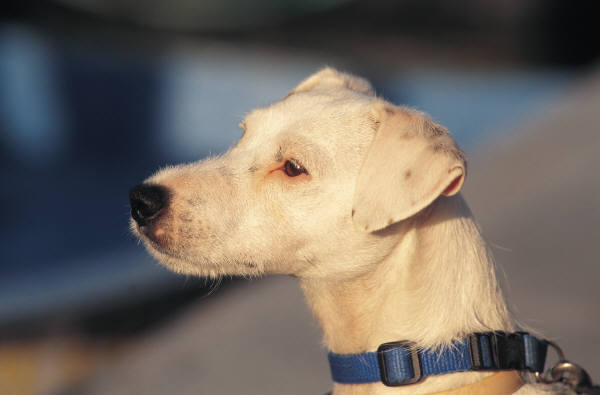Although inferior left-over ingredients in dog food and cat food are the source of frustration for many pet owners today, the actual beginning of commercial pet food began using left-overs.
A century or so ago, dogs and cats were rarely considered pets. Unlike most pets today, dogs and cats were not welcomed inside the home and for the most part fended for themselves. Dogs would guard the property and/or herd livestock and cats would control rodents around the property. Their diet consisted of whatever prey they could catch and the occasional left over from family meals.
American James Spratt, while traveling in England, noticed dogs being fed left over biscuits in the shipyard. Yankee ingenuity kicked in and he decided he could make his own dog biscuit to sell. While the accounts of the exact ingredients vary, James Spratt basically used left-overs from human foods and developed the first commercial dog food company in the mid 1860’s. His company was sold in 1890 to a public company and manufacturing was moved to the U.S.
As convenience foods for people prospered, several U.S. companies entered into this new market making dog food in biscuit form. In fact, what is known today as Milkbone dog treats was originally developed as a complete diet. During the 1950’s Ralston Purina, whom had been selling livestock feed for years, developed the first kibble dog food. In the late 1950’s and early 1960’s Purina Dog Chow became so popular there was practically a line at the grocery store for it; Purina reports that in 1959 they sold 5 million tons of Dog Chow and Cat Chow.
Even with sales of commercial pet foods in the millions of tons, most pet owners in the 1960’s still fed their pets left-overs from the family table. To discourage pet owners from feeding table scraps and encourage sales of commercial pet food (at the time barely more than commercial food left-overs) in 1964 the pet food industry developed a structured media campaign warning pet owners of the dangers associated with feeding pets table scraps. A press release was sent to thousands of newspapers, and articles were published in 16 magazines including top sellers Redbook and Good Housekeeping warning pet owners to the dangers of feeding their pet table scraps; along with warning alerts aired on 91 radio stations across the country. These print and radio messages to pet owners all quoted warnings from veterinarians; few pet owners in the 1960’s went against the advice of a veterinarian. This warning campaign was very effective, more than likely responsible for the huge growth of commercial pet food ever since.
As dogs and cats became family members and less working animals, pet owners began being ‘sold’ pet foods with links to human foods. Pet foods with ‘gravy’ began the first people food connection; today pet foods are ‘flavored’ with everything from Albacore Tuna to Filet Mignon associating them with popular, quality people foods. (Pet Foods that are ‘flavored’ with Albacore Tuna or Filet Mignon does NOT mean the dog or cat is consuming Albacore Tuna or Filet Mignon. It simply means that the food has some type of tuna or steak flavor – which can be natural such as broth or artificial such as chemical flavoring.)
Up until 1974 the National Research Council (NRC) developed the protocol for the nutritional values needed in pet food. In 1974 a new organization, the American Association of Feed Control Officials (AAFCO) took over the responsibility for standardizing the manufacturing of commercial pet food. There are many rumors that this group was organized by the pet food manufacturers to more or less control their own Industry. To this day, representatives of Big Pet Food sit on every advisory board of AAFCO.
With Big Pet Food representatives influence over AAFCO pet food regulations, and in turn with the FDA’s blind acceptance of AAFCO regulations and ingredient definitions, many commercial dog foods and cat foods today are little more than they were over 100 years ago – left-overs from the processing of human foods. While some pet foods use the highest quality of ingredients and the latest scientific research, many others do not. The problem for pet owners continues to be discovering which is which; pet food regulations do not allow the quality minded pet food manufacturers to tell petsumers the truth. Current pet food regulations DO allow pet food labels to make “an unqualified claim, either directly or indirectly” yet they DO NOT allow a pet food manufacturer to inform pet owners to quality of ingredients (human grade or pet grade).
Although pet food’s beginnings were founded in inferior left-overs, most pet owners today wouldn’t consider giving their dog or cat the type of left-overs commonly used in pet food. Until the FDA decides to enforce Federal laws that were designed to protect our pets, risky left-overs will continue to be the mainstay ingredients of many dog foods, cat foods, and pet treats.
Wishing you and your pet(s) the best,
Susan Thixton
Pet Food Safety Advocate
Author, Buyer Beware
Co-Author Dinner PAWsible
TruthaboutPetFood.com
PetsumerReport.com
What’s in Your Pet’s Food?
Is your dog or cat eating risk ingredients? Chinese imports? Petsumer Report tells the ‘rest of the story’ on over 2500 cat foods, dog foods, and pet treats. 30 Day Satisfaction Guarantee. www.PetsumerReport.com
Have you read Buyer Beware? Click Here
 Cooking for pets made easy, Dinner PAWsible
Cooking for pets made easy, Dinner PAWsible
Are you subscribed to Truth About Pet Food Newsletter? Click Here to subscribe
Follow Truth about Pet Food on Twitter
Become a Fan of Truth about Pet Food, Dinner PAWsible, Buyer Beware on Facebook
Find Healthy Pet Foods in Your Area Click Here




































Anastasia
May 7, 2014 at 5:46 am
I read this paragraph fully about the resemblance of hottest and preceding technologies, it’s amazing article.
Here is my page :: yahoo search (Anastasia)